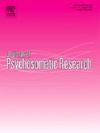中老年人慢性肾脏疾病与抑郁症状轨迹的关系
IF 3.5
2区 医学
Q2 PSYCHIATRY
引用次数: 0
摘要
本研究旨在通过反复测量肾功能正常的老年人的抑郁症状,探讨抑郁症状轨迹与随后发生慢性肾脏疾病(CKD)风险之间的关系。方法:共纳入9650名参与者,包括来自中国健康与退休纵向研究的社区居住中老年人。在三个时间点评估抑郁症状:第1波(2011-2012年)、第2波(2013-2014年)和第3波(2015-2016年)。使用潜在混合模型确定抑郁症状的轨迹,并使用COX比例风险模型验证这些轨迹与CKD之间的关联。结果:确定了5种抑郁症状轨迹模式:低CESD-10评分(低稳定,3702人,38.36%)、中度CESD-10评分(中稳定,3602人,37.33%)、中度起始持续升高的CESD-10评分(中升高,825人,8.55%)、高起始持续降低的CESD-10评分(高降低,1032人,10.69%)、稳定的高CESD-10评分(高稳定,489人,5.07%)。在从第三波到第四波(2017-2018)的两年随访期间,发生了420例CKD事件。与低稳定组相比,中稳定组、中增加组、高减少组和高稳定组的参与者发生CKD的风险增加,多变量校正风险比(95%置信区间)分别为1.32(1.02-1.71)、1.68(1.15-2.45)、2.26(1.63-3.13)和3.73(2.57-5.43)。结论:随着时间的推移,伴有加重(中度加重)和持续抑郁症状(包括中度稳定型、高减轻型和高稳定型)的中老年患者发展为CKD的风险更高。本文章由计算机程序翻译,如有差异,请以英文原文为准。
Association of depressive symptom trajectories with chronic kidney disease in middle-aged and older adults
Introduction
This study aimed to investigate the association between trajectories of depressive symptoms and the subsequent risk of chronic kidney disease (CKD) by measuring depressive symptoms repeatedly in older adults with normal renal function.
Methods
A total of 9650 participants, comprising community-dwelling middle-aged and older adults from the China Health and Retirement Longitudinal Study, were included. Depressive symptoms were assessed at three time points: Wave 1 (2011−2012), Wave 2 (2013–2014), and Wave 3 (2015–2016). Trajectories of depressive symptoms were determined using latent mixed models, and the association between these trajectories and CKD was verified using COX proportional hazards models.
Results
Five trajectory patterns of depressive symptoms were identified: low CESD-10 score (Low-Stable, 3702 participants, 38.36 %), moderate CESD-10 score (Moderate-Stable, 3602 participants, 37.33 %), continuously increasing CESD-10 score from moderate initiation (Moderate-Increasing, 825 participants, 8.55 %), continuously decreasing CESD-10 score from high initiation (High-Decreasing, 1032 participants, 10.69 %), and stable high CESD-10 score (High-stable, 489 participants, 5.07 %). During the two-year follow-up period from Wave 3 to Wave 4 (2017–2018), 420 CKD events occurred. Participants in the Moderate-Stable, Moderate-Increasing, High-Decreasing, and High-Stable groups had an increased risk of developing CKD compared to those in the Low-Stable group, with multivariable-adjusted hazard ratios (95 % confidence interval) were 1.32 (1.02–1.71), 1.68 (1.15–2.45), 2.26 (1.63–3.13), and 3.73 (2.57–5.43), respectively, comparted to those with low-stable trajectory.
Conclusion
Middle-aged and older adults with increasing (Moderate-Increasing) and persistent depressive symptoms (including Moderate-Stable, High-Decreasing, and High-Stable) face a higher risk of developing CKD over time.
求助全文
通过发布文献求助,成功后即可免费获取论文全文。
去求助
来源期刊
CiteScore
7.40
自引率
6.40%
发文量
314
审稿时长
6.2 weeks
期刊介绍:
The Journal of Psychosomatic Research is a multidisciplinary research journal covering all aspects of the relationships between psychology and medicine. The scope is broad and ranges from basic human biological and psychological research to evaluations of treatment and services. Papers will normally be concerned with illness or patients rather than studies of healthy populations. Studies concerning special populations, such as the elderly and children and adolescents, are welcome. In addition to peer-reviewed original papers, the journal publishes editorials, reviews, and other papers related to the journal''s aims.

 求助内容:
求助内容: 应助结果提醒方式:
应助结果提醒方式:


